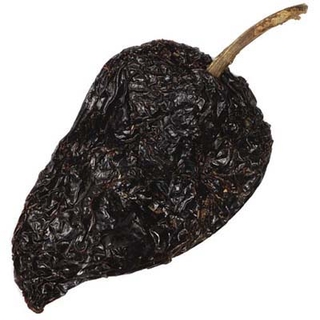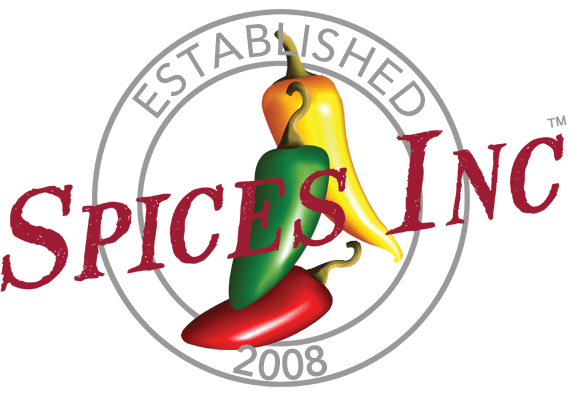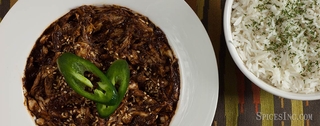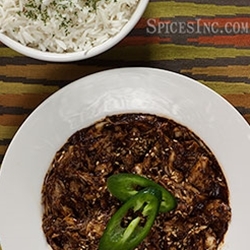Mulato Chiles


Mulato Chiles
Mulato Chiles, Capsicum annuum, measure 1,000-1,500 Scoville Heat Units (SHU). They are also called are also called chile mulato, mulato chile, mulato, mulato pepper, or dried mulato chiles.
These peppers are the result of prolonged ripening of a poblano pepper. Their skin turns a very deep purplish-brown color that almost appears black. Poblano peppers that are not allowed to ripen as long before harvesting and drying become Ancho Chiles.
Mulato Chiles are fairly large. They measure roughly 4-5 inches long and 2 ½-3 inches at the shoulder, tapering down to a spade-like triangle.
Mulato Chiles are popular with cafes; American, Mexican, and Middle Eastern restaurants; independent spice shops; breweries; and gourmet jams manufacturers.
There are approximately 2-3 dried Mulato Chiles per ounce.
Please visit our whole dried chiles page to browse the other chiles we have available.
Flavor Profile
Mulato chiles offer a complex flavor profile. They are sweet, with hints of smoke, chocolate, licorice, cherries and coffee.
Heat Level
Mulato chiles offer a mild heat, between 1,000-1,500 Scoville Heat Units (SHU).
How To Use
Mulato Chiles are one of the “holy trinity” of peppers used to make Mole Poblano; they are ideal for mole recipes due to their rich flavor and deep color. Rehydrate whole chiles and fry them in Chile Rellenos, or make a pork-and-cheese stuffed mulato that bakes in the oven. Dice them to add extra depth to Borracho Beans or put some in the pot with Easy Homemade Chili. Or grind them to a playful flake and enjoy some chile-laced Cinnamon Chocolate Bark.
Use Mulato Chiles in Mexican sauces, stews, chili, corn chowder, enchilada sauce, DIY seasoning blends, and salsas. These chiles pair well with other chiles, coffee, cinnamon, chocolate, oregano, Mexican oregano, sesame seeds, nuts, rice dishes, meats, cheese, potatoes, cilantro, and coriander.
| Also Called | Chile mulato, mulato chile, mulato, mulato pepper, or dried mulato chiles |
| Species | Capsicum annuum |
| Ingredients | Whole mulato chile |
| Flavor Profile | A bit sweet with hints of smoky chocolate, licorice, cherries, and coffee |
| Scoville Heat Units | 1,000-1,500 SHU |
| Recommended Uses | Moles, sauces, stews, chili, rice dishes, meat, chocolate |
| Cuisine | Mexican |
| How To Store | Airtight container in a cool, dark place |
| Shelf Life | 1-2 Years |
| Country of Origin | Mexico |
Nutrition Facts
Serving Size1 chile, 10g
Amount Per Serving
Calories32
% Daily Value*
Total Fat1g1%
Saturated Fat0g0%
Trans Fat0g
Polyunsaturated Fat0g
Monounsaturated Fat0g
Cholesterol0mg0%
Sodium9.2mg0%
Total Carbohydrate7.0g3%
Dietary Fiber2.9g12%
Total Sugars4.1g
Added Sugars0g0%
Sugar Alcohol0.0g
Protein1.1g1%
Vitamin D0mcg0%
Calcium5mg0%
Iron1mg3%
Potassium187mg4%
*The % Daily Value (DV) tells you how much a nutrient in a serving of food contributes to a daily diet. 2,000 calories a day is used for general nutrition advice. These values were calculated and therefore are approximate. For more accuracy, testing is advised.


